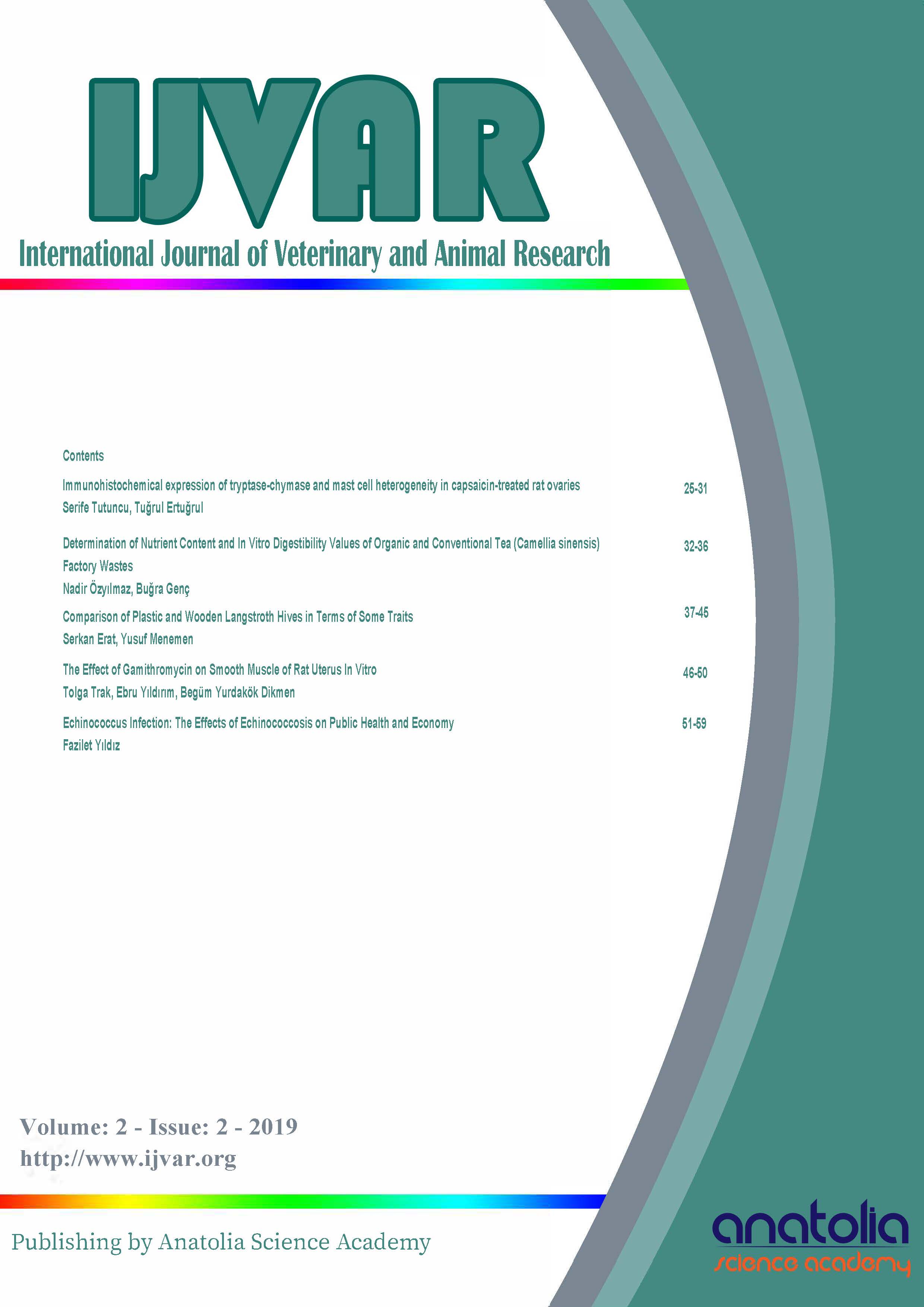Comparison of Plastic and Wooden Langstroth Hives in Terms of Some Traits
Keywords:
Apis mellifera L, Langstroth hive type, honey yield, survivability, swarm, relative risk.Abstract
This study was carried out to compare the number of honeycombs with full of bees (wax building activity) (frame count), survivability, swarm condition and honey yield for the thermo plastic (plastic) and wooden Langstroth honey bee hives. A total of 23 hives (10 plastic and 13 wooden hives) were used. The mean frame count for the plastic and wooden hives, respectively, were 13.25±0.28 and 14.77±0.48 (Z= -1.24, p=0.22). Survivability rates for the plastic and wooden hives, respectively, were 90.00% and 53.85% for at the end of first year (Fisher’s exact test p=0.089) and 30.00% and 15.38% (Fisher’s exact test, p=0.618) for at the end of the study. The plastic hives decreased the death incidence at the end of the study [relative risk ratio (RR)=0.82]. Swarm rates were 40.00% and 15.38% (Fisher’s exact test p=0.341) for the plastic and wooden hives, respectively at the end of first year. Swarm condition increased about 3 times more in the plastic hives as compared to the wooden hives (RR=2.60). Mean honey yield per honeycomb was higher in the plastic hives (2264.65±182.39 g) than in the wooden hives (1634.20±191.08 g) (t=2.39, p=0.028). As a result, it was thought that thermo plastic hives can be efficiently and successfully used by bee keepers since they may increase survivability and honey yield and are easy to use.







